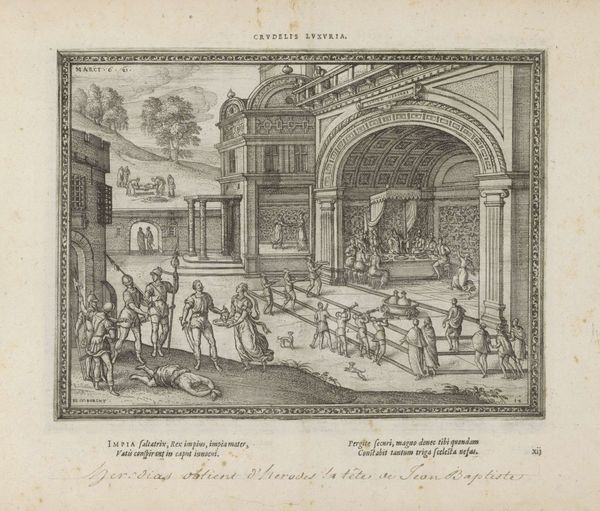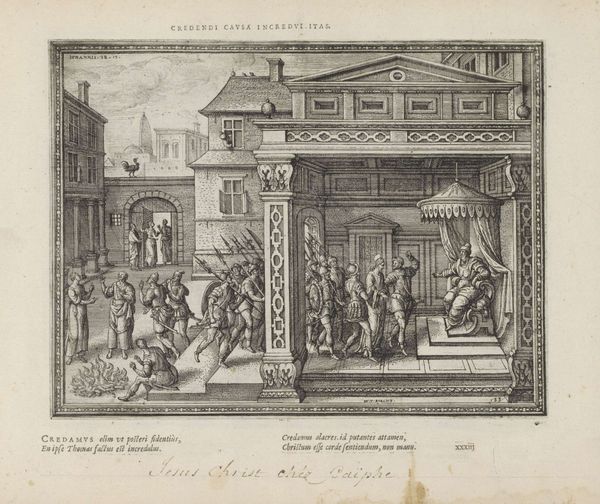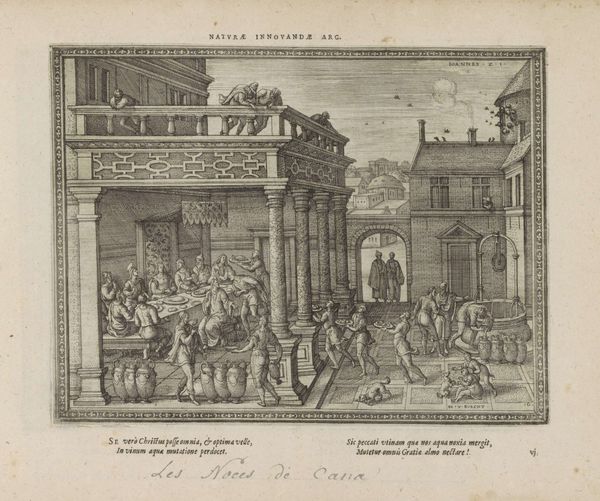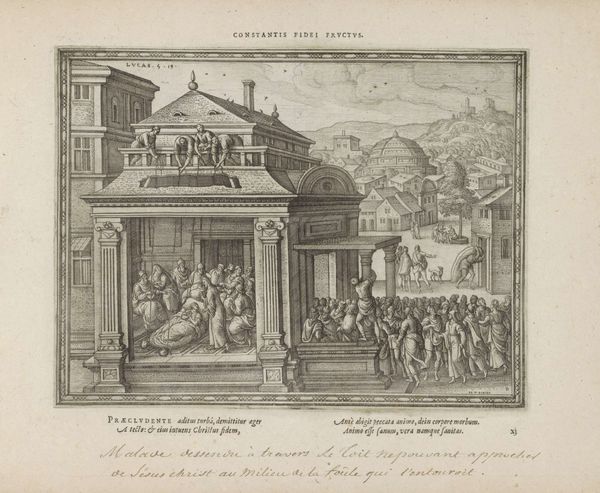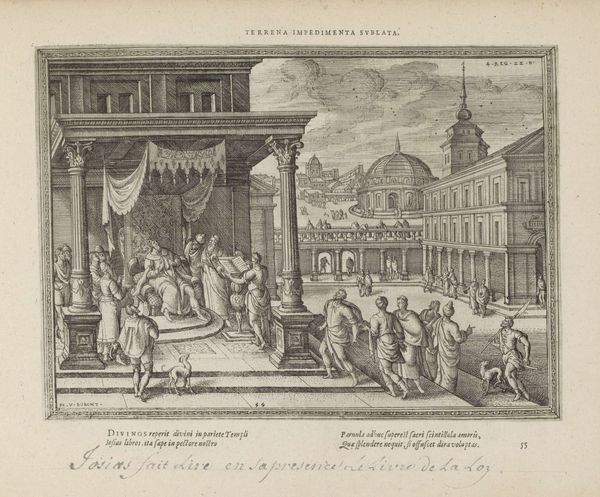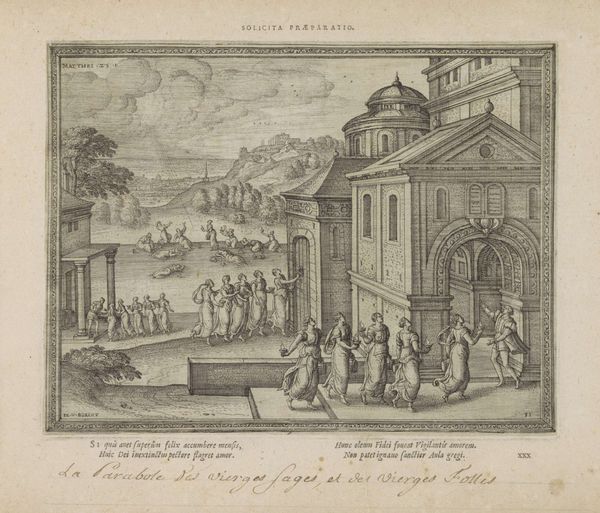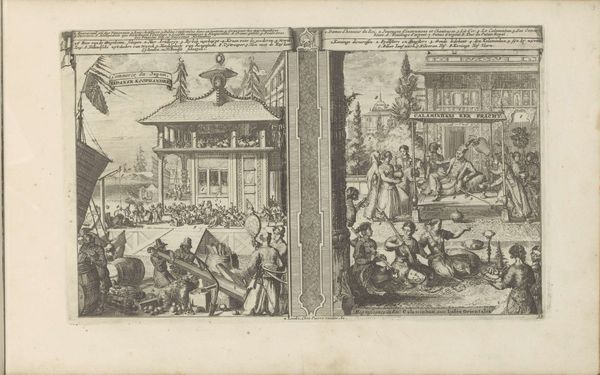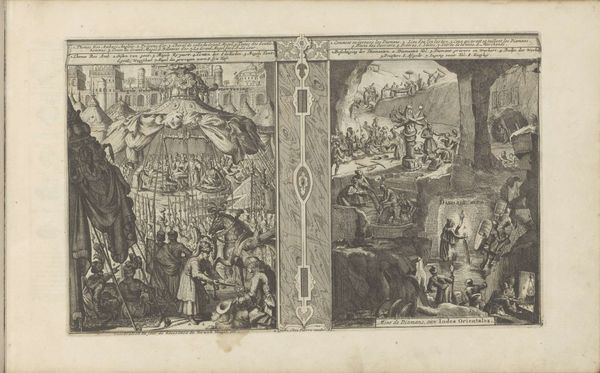
print, engraving
#
narrative-art
# print
#
old engraving style
#
perspective
#
figuration
#
history-painting
#
northern-renaissance
#
engraving
Dimensions: height 189 mm, width 244 mm
Copyright: Rijks Museum: Open Domain
Curator: Pieter van der Borcht the Elder’s print, titled "Verschijning van Christus aan de apostelen," made sometime between 1582 and 1613, presents us with a scene of considerable narrative complexity. The use of engraving is particularly striking. Editor: The immediate impact is one of carefully organized chaos. Look how Van der Borcht frames this encounter with detailed architecture, almost bisecting the composition with this dramatic, shadowed facade. What strikes you most about its structure? Curator: I’m captivated by the formal interplay of the interior and exterior spaces. Observe how the artist employs linear perspective to create depth. The figures are meticulously arranged within a structured architectural setting, while a bustling city unfolds outside. Note how the vanishing point draws our eyes towards a distant domed structure, emphasizing spatial recession and balance. Editor: That dome pulls my attention towards the daily life outside the architecture, away from the religious gathering in the foreground. I am interested in how this image emphasizes religious and secular life at the same time. How would you describe its significance to its original viewers? Curator: Given the context of the Northern Renaissance, and especially if we examine the print’s inscription, the incredulity of Saint Thomas appears to provide an interesting meditation on belief and sensory experience within society at that time. The artist masterfully synthesizes religious subject matter with everyday life. Editor: Agreed. The figures in classical robes add to the historical context. Though not shown prominently, the artist creates tension with Thomas touching Christ's wounds. How else can we decode the structure to better appreciate its socio-cultural role? Curator: In analyzing Borcht’s print, consider the dialogue between form and content, revealing much about the artist's vision and the era. Its visual richness challenges viewers to question their own sense-making capacities through historical understanding and theoretical thought. Editor: A fascinating visual and narrative analysis, and indeed a window into both artistic design and socio-cultural considerations. The visual analysis illuminates the artist’s skills, while cultural understanding anchors the themes of faith and doubt present at the time this work was produced.
Comments
No comments
Be the first to comment and join the conversation on the ultimate creative platform.


